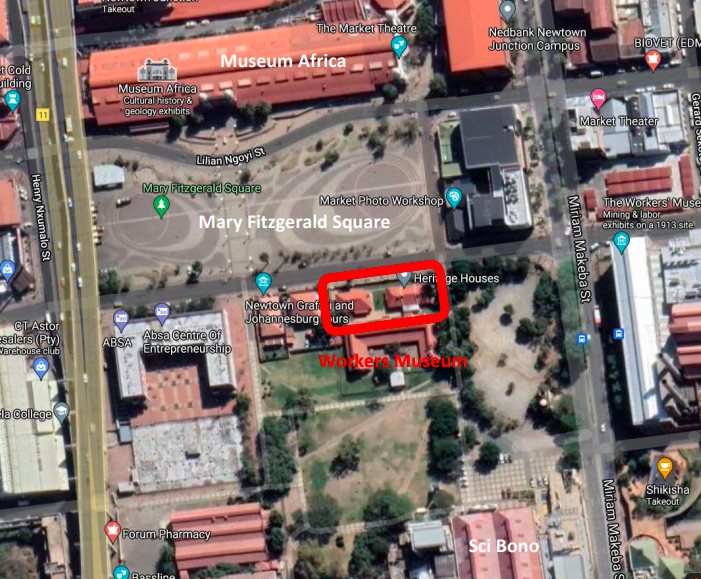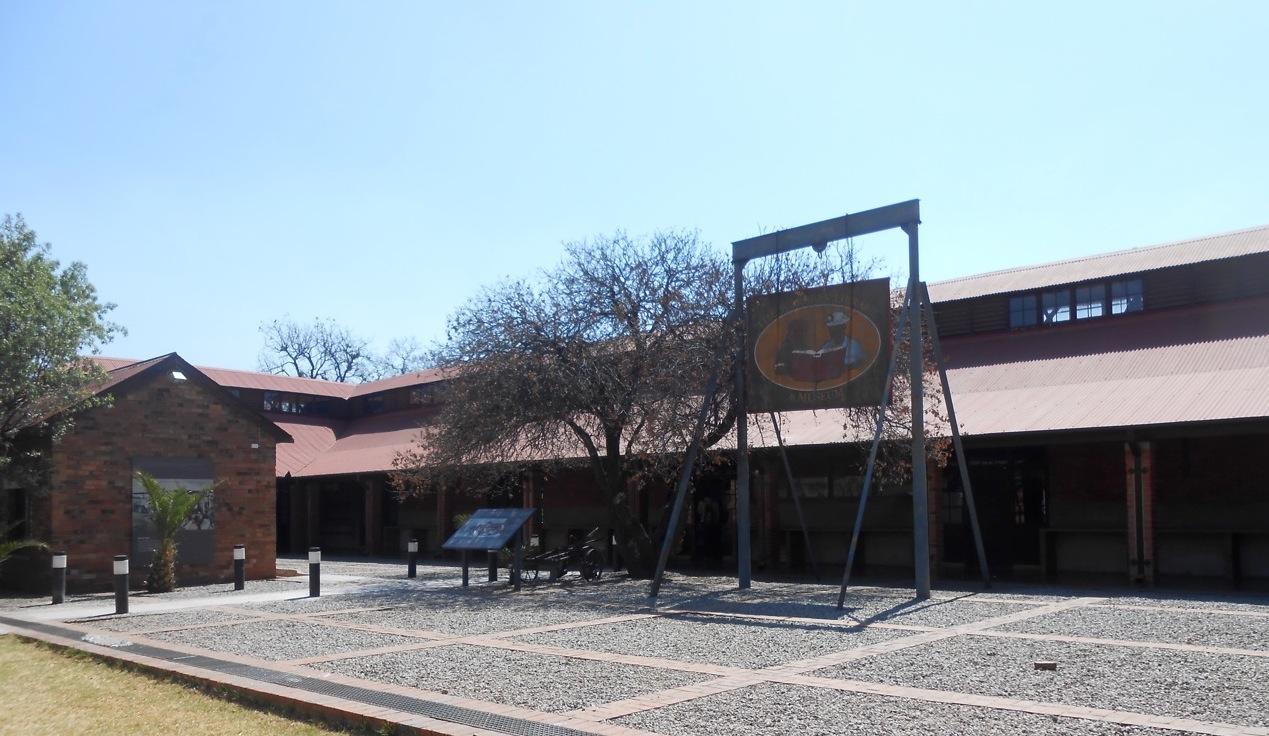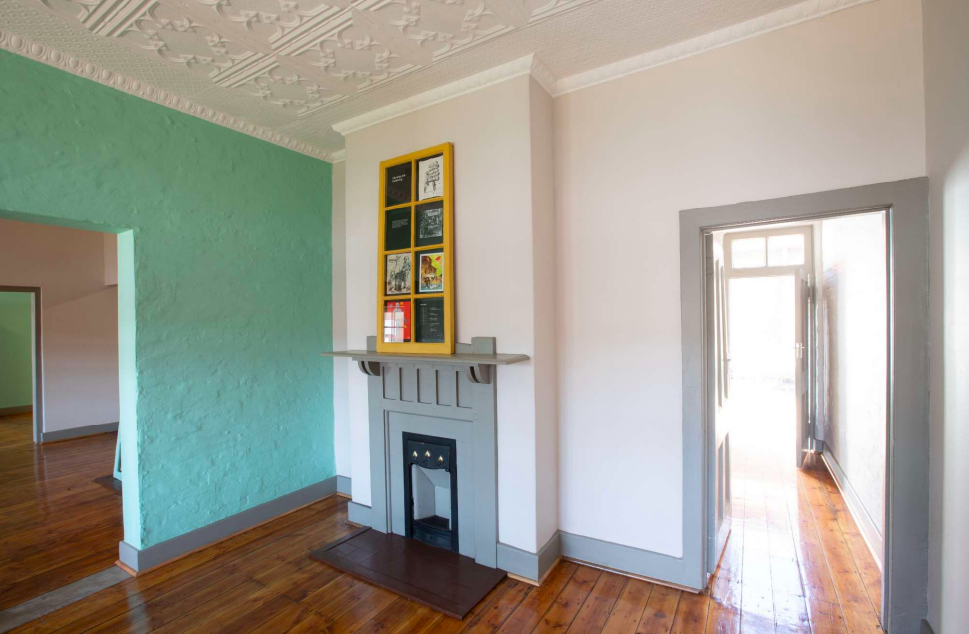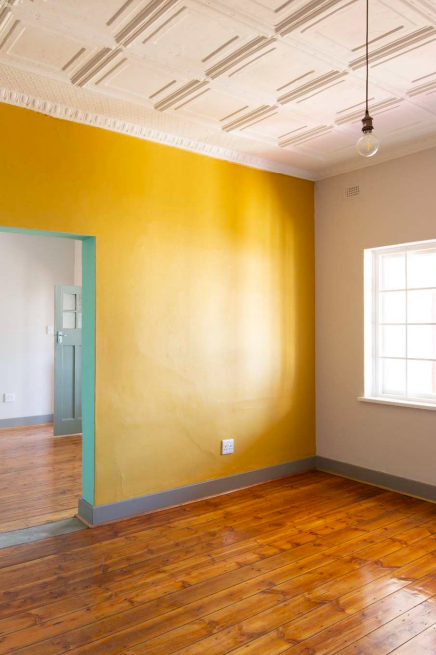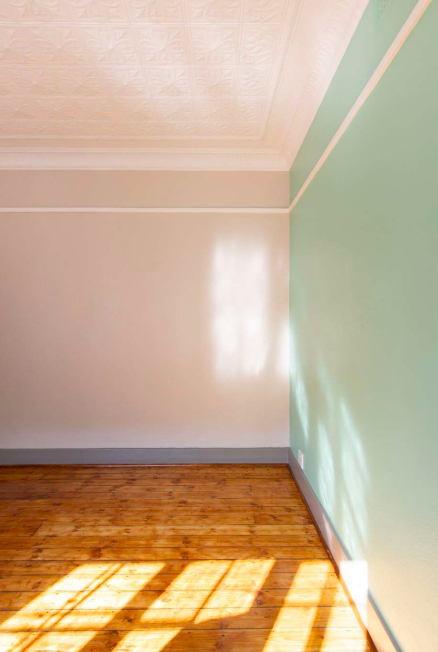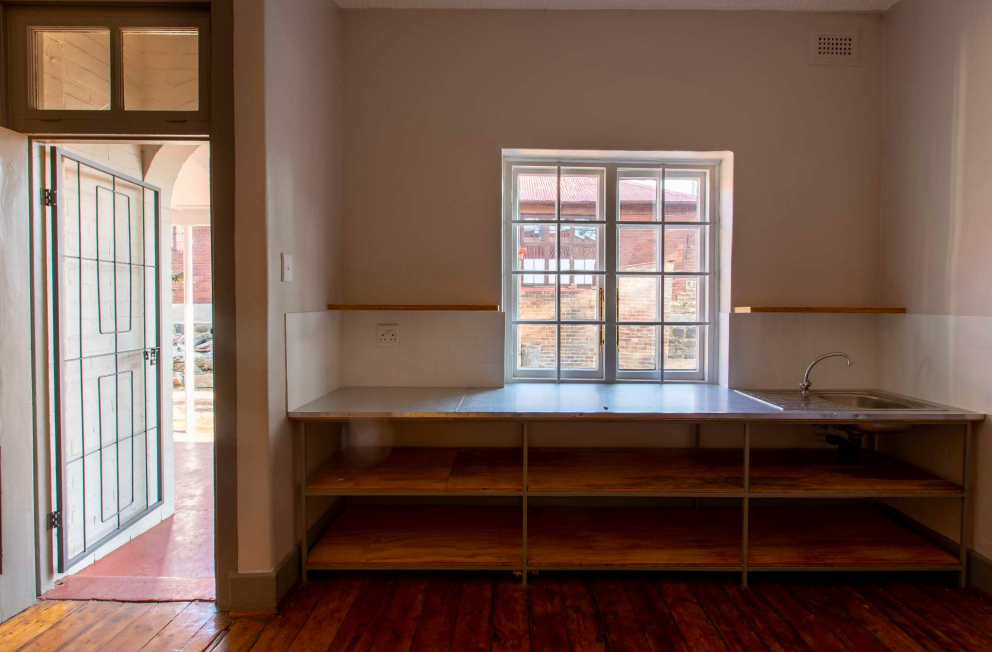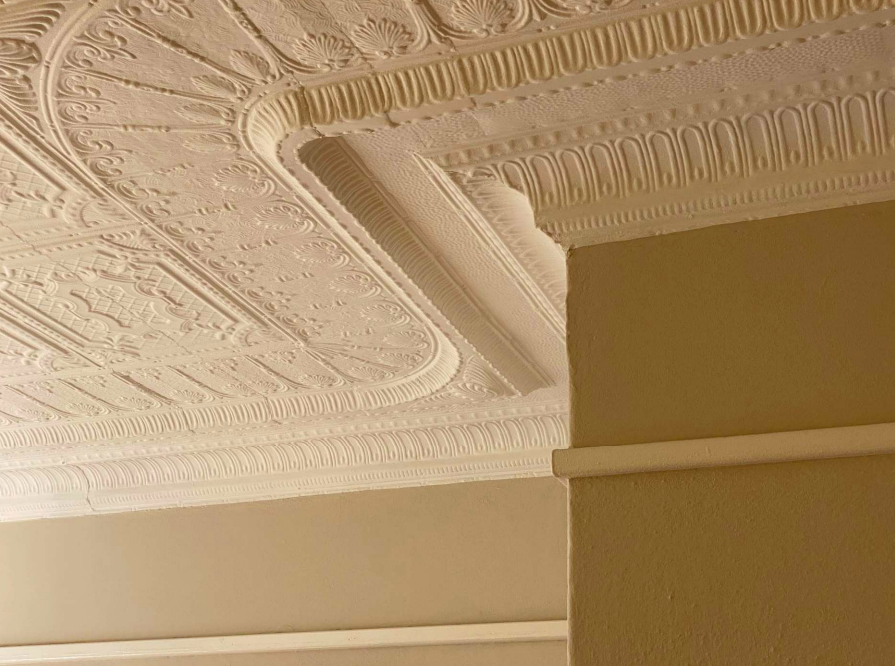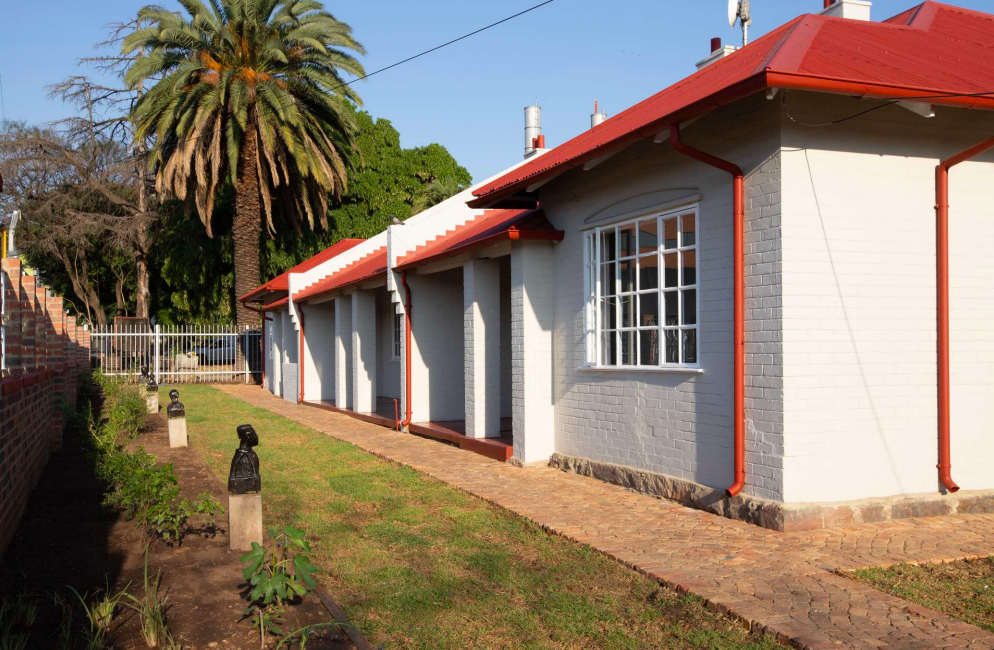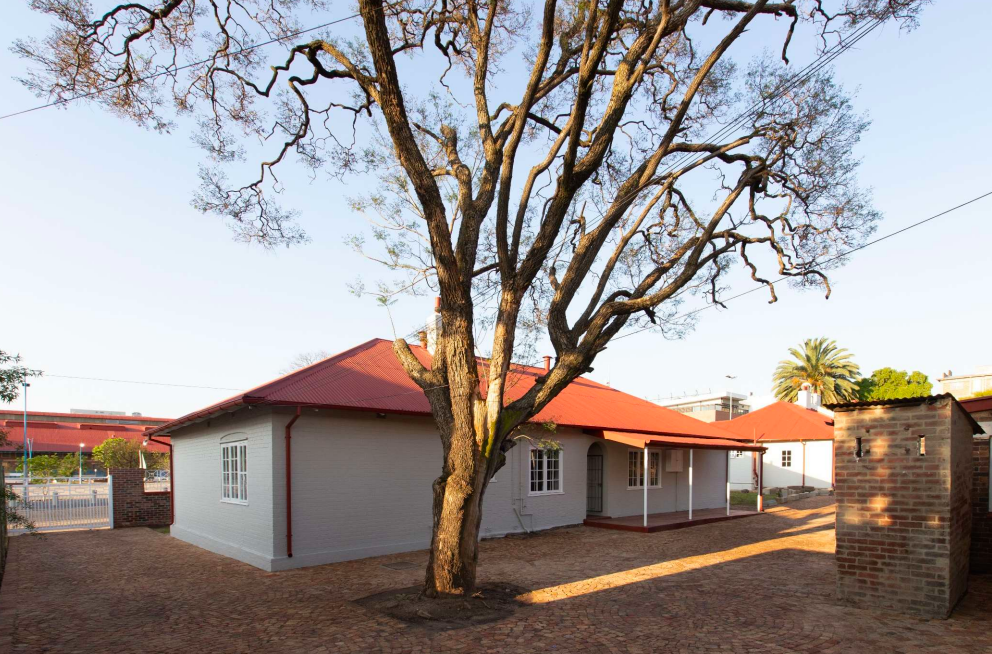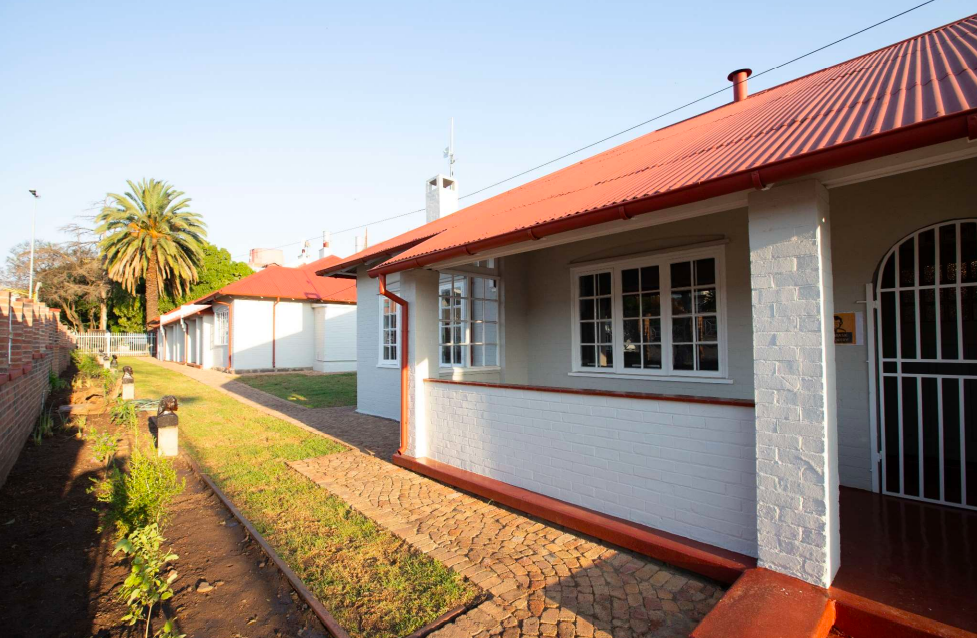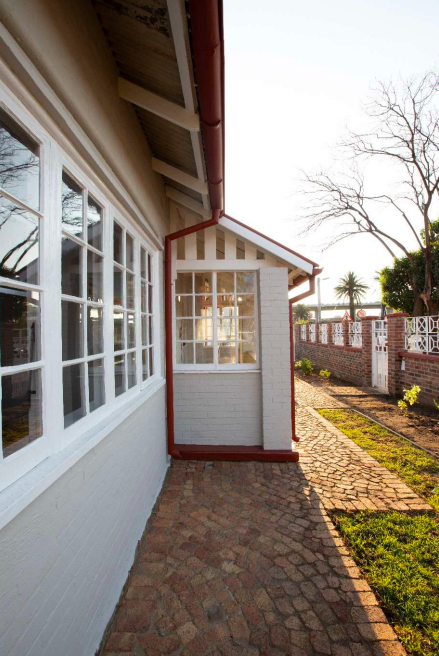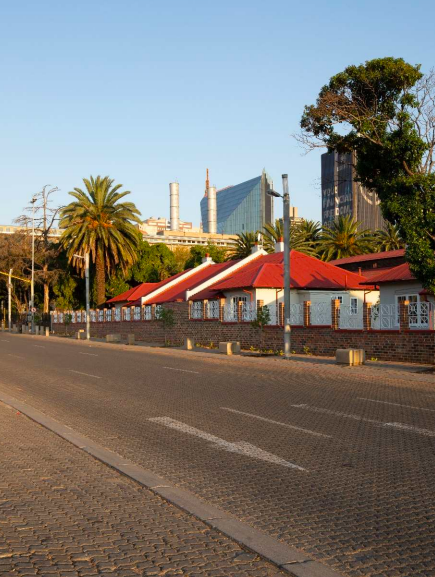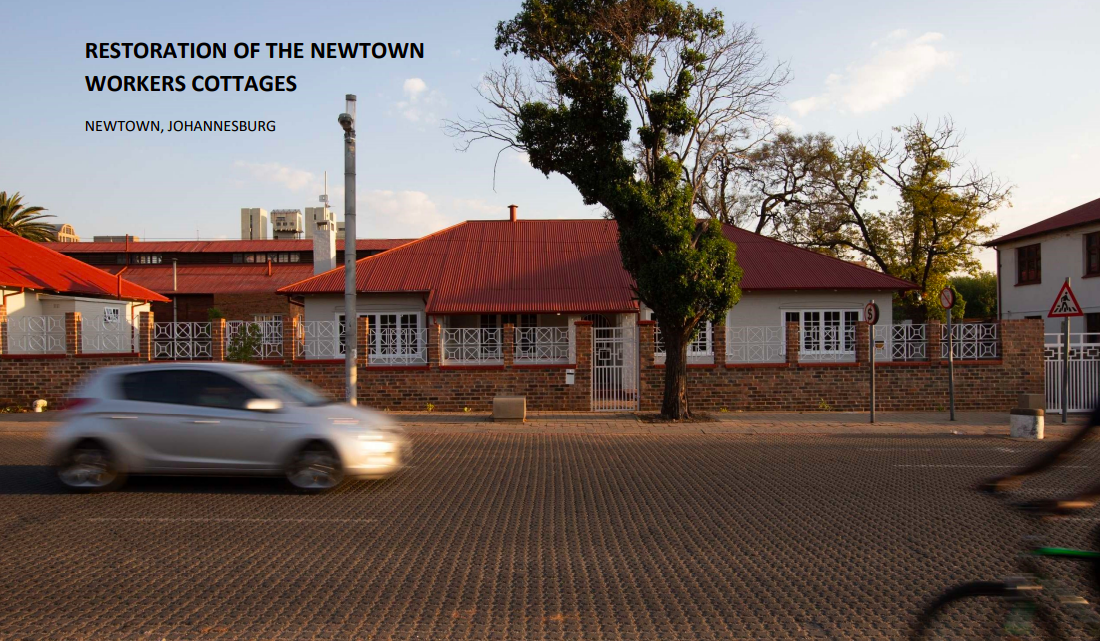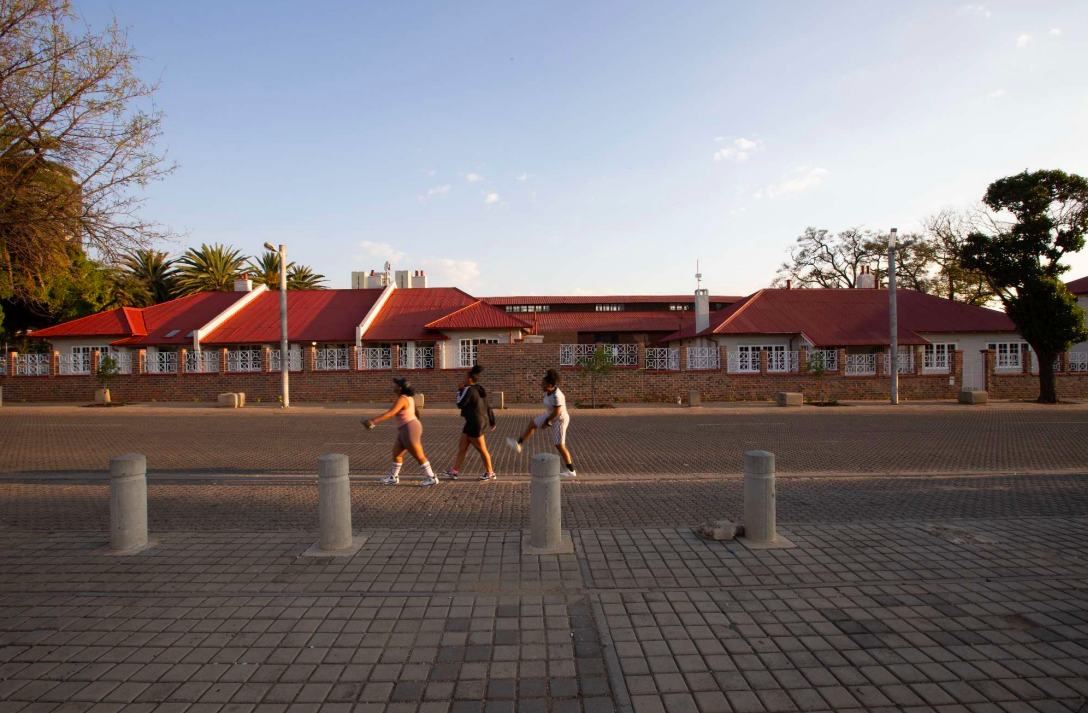
Disclaimer: Any views expressed by individuals and organisations are their own and do not in any way represent the views of The Heritage Portal. If you find any mistakes or historical inaccuracies, please contact the editor.
Dating from the early 20th century, the Workers Cottages in Newtown, Johannesburg, form part of the Workers Museum Complex. The Workers Museum is located in a former black migrant workers’ hostel, with the adjacent cottages built for white staff and supervisors. The museum speaks of the harsh segregated labour practices in the city with the relative comfort of the adjacent cottages further highlighting the segregation and prejudice that existed between workers of different races.
Location of the Workers' Cottages
Workers' Museum (The Heritage Portal)
The cottages, facing onto Mary Fitzgerald Square, had fallen into a state of disrepair and were left crumbling and unusable after a failed renovation project in the mid 2000s. The project aimed to bring the cottages back to a condition where they could be used for offices for the Museum as well as spaces for various tenants and NGO’s that support arts, culture and heritage. From the beginning the tight budget was used as a means to conceptually guide the project. Botched renovations and the stripping out of sections of the building were seen as an opportunity to reveal the underlying materiality of the building. The building was seen as a physical documentation of its own history with its original materiality, defects and quirks accepted as part of its character and significance. The intention of the project was always to bring back the original quality of the building and not have new interventions outshine the old. With this in mind the hand of the architect had to be kept very light, almost invisible. The existing buildings guided design decisions with only a slight reinterpretation necessary to show these as a contemporary layering onto the site. Original paint colours of ochre and turquoise uncovered during the restoration were reinterpreted as blocks of colour to bring new energy into the spaces while new fittings and finishes are all reinterpretations of the old. Wherever possible existing materials were reused and recycled, from windows and floor boards to bollards and recovered bricks.
Main spaces in the buildings become focal points for the artworks programme which is an integral part of the buildings' reinvention. The scars of the failed renovation project are not covered up or hidden but become an opportunity to expose the materiality of the building. (Mayat Hart & Papercut Photography)
Spaces internally are kept clean and uncluttered. Colours used were uncovered as part of the original colour scheme in the house but reinterpreted in a more contemporary manner. Layers of change to the building are acknowledged and retained without over restoring and removing a sense of age and the poetics of imperfection. (Mayat Hart & Papercut Photography)
New interventions (such as kitchens or bathrooms) were kept as simple and cost effective contemporary reinterpretations of what would have originally be found in the buildings. (Mayat Hart & Papercut Photography)
Original interior features were retained and restored where ever possible. (Mayat Hart & Papercut Photography)
Artwork became an important part of the project. A call was put out for local artists to prepare artworks following the theme of “Labour and Johannesburg - reflecting the past and present of workers in the region”. From the proposals 50 artists were commissioned to produce small artworks to form a permanent collection in the buildings. Framed and displayed in the recovered and recycled windows frames from the building, they add an important new energy and meaning to the restored spaces. The commissions for the artists, in the midst of the COVID pandemic, were widely welcomed with the MMC for Community Development, Cllr Arnolds, expressing this at the opening of the buildings saying that “the artworks speak widely and directly to the people. They tell the stories of our City and of our nation; of our heroes and of the ordinary people. In that way, we are able to connect to workers’ history and this helps to show who we are and how we connect to our past and to each other. It is very fitting that these art works should be shown here.”
The success of the renovation and restoration is a pair of buildings that look like they belong, as if nothing has changed despite their substantial upgrade. While the buildings represent a difficult part of South Africa and Johannesburg’s past their preservation is important. With the adjacent museum, the buildings remind us of a segregated and brutal past. They also however act as a reminder of how far we have come and are a symbol of hope for what can be achieved.
Below are a few more photographs of the cottages after restoration.
The restored north façade of and new landscaping of the east cottage. (Mayat Hart & Papercut Photography)
The south façade of the restored west cottage with the new verandah constructed from salvaged building elements. (Mayat Hart & Papercut Photography)
The restored street facades of the cottages with new landscaping (shortly after planting). (Mayat Hart & Papercut Photography)
Details of the restored exterior of the west cottage. (Mayat Hart & Papercut Photography)
The restored cottages at the edge of the Johannesburg CBD. (Mayat Hart & Papercut Photography)
Comments will load below. If for any reason none appear click here for some troubleshooting tips. If you would like to post a comment and need instructions click here.

